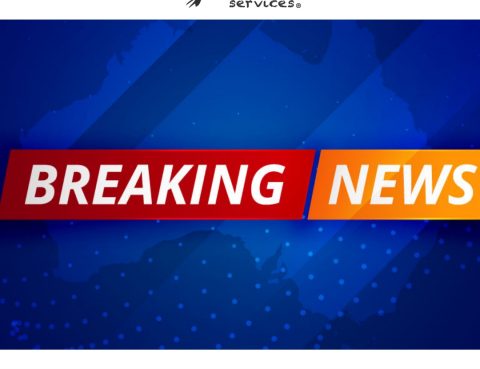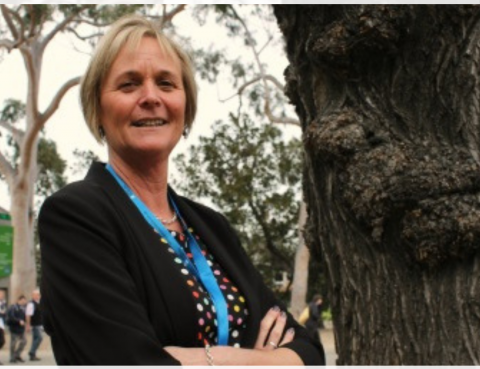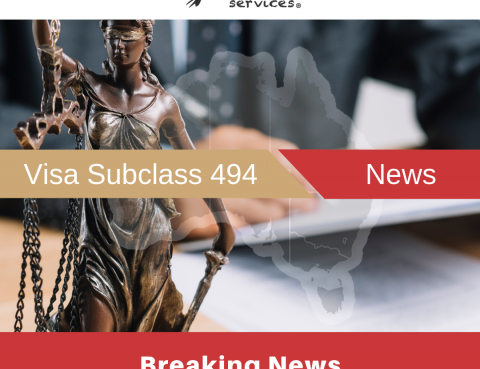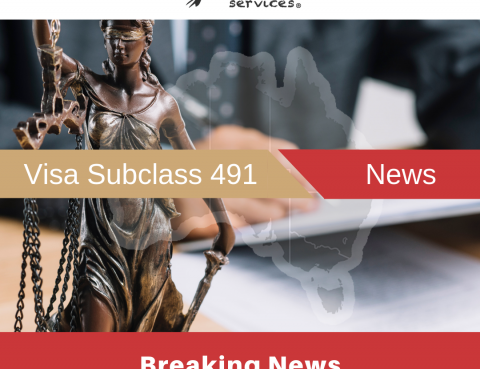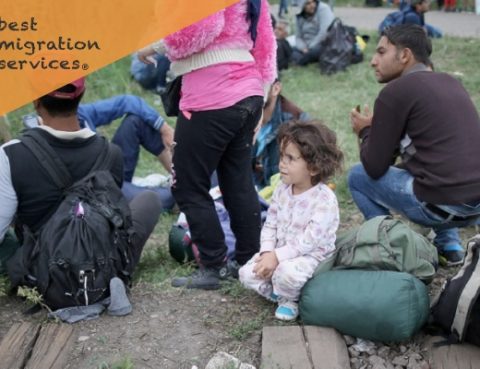WikiLeaks founder Julian Assange was arrested by British police and carried out of the Ecuadorean embassy on Thursday after his South American hosts abruptly revoked his seven-year asylum in a move his supporters said was illegal.
LONDON (Reuters) – WikiLeaks founder Julian Assange was arrested by British police and carried out of the Ecuadorean embassy on Thursday after his South American hosts abruptly revoked his seven-year asylum in a move his supporters said was illegal.
WikiLeaks founder Julian Assange is seen as he leaves a police station in London, Britain April 11, 2019. REUTERS/Peter Nicholls
Following are comments and reactions to the news:
BRITISH FOREIGN SECRETARY JEREMY HUNT
“Julian Assange is no hero, he has hidden from the truth for years and years.
“It’s not so much Julian Assange being held hostage in the Ecuadorean embassy, it’s actually Julian Assange holding the Ecuadorean embassy hostage in a situation that was absolutely intolerable for them.”
BRITISH JUNIOR FOREIGN MINISTER ALAN DUNCAN
“It is our broad policy in all circumstances, so it equally applies to Julian Assange, that he will not be extradited if he is going to face the death penalty. So that will apply to him.”
AUSTRALIAN FOREIGN MINISTER MARISE PAYNE
“Mr Assange will continue to receive the usual consular support from the Australian Government. Consular officers will seek to visit Mr Assange at his place of detention.
“I am confident, as the United Kingdom Foreign Secretary Jeremy Hunt publicly confirmed in July 2018, that Mr Assange will receive due process in the legal proceedings he faces in the United Kingdom.”
FORMER US SPY AGENCY CONTRACTOR EDWARD SNOWDEN
“Assange’s critics may cheer, but this is a dark moment for press freedom.”
“The United Nations formally ruled his detention to be arbitrary, a violation of human rights. They have repeatedly issued statements calling for him to walk free—including very recently.”
WIKILEAKS
“This man is a son, a father, a brother. He has won dozens of journalism awards. He’s been nominated for the Nobel Peace Prize every year since 2010. Powerful actors, including CIA, are engaged in a sophisticated effort to dehumanize, delegitimize and imprison him.”
RAFAEL CORREA, FORMER ECUADORIAN PRESIDENT
“The greatest traitor in Ecuadorian and Latin American history, Lenin Moreno, allowed the British police to enter our embassy in London to arrest Assange.
“Moreno is a corrupt man, but what he has done is a crime that humanity will never forget.”
SVEN-ERIK ALHEM, RETIRED PROSECUTOR, CHAIRMAN OF NGO VICTIM SUPPORT SWEDEN
“I’d think it would be fairly uphill to reopen the investigation (in Sweden), mainly because testimonies usually weaken with time and it’s now been 10 years. On top of that, the statute of limitation is drawing near, and Assange would need to come here.”
ASSANGE FRIEND VAUGHAN SMITH
“It was a miserable existence and I could see it was a strain on him, but a strain he managed rather well.”
“The thing that was most difficult for Julian was the solitude.”
“He was very tough, but the last year in particular was very difficult. He was constantly being surveilled and spied upon. There was no privacy for him.”
SOURCE
[insert page=’footer’ display=’content’] Following the OMARA’s decision to cease printing RMA Registration Cards and RMA practising certificates, Migration Alliance, with the support of LTA, offers these two essential items for sale to RMAs. Also for sale are lapel badges (pins), and RMA Keyrings.
Following the OMARA’s decision to cease printing RMA Registration Cards and RMA practising certificates, Migration Alliance, with the support of LTA, offers these two essential items for sale to RMAs. Also for sale are lapel badges (pins), and RMA Keyrings.
The RMA registration cards and practising certificates feature a unique QR code which links back to the OMARA website, allowing clients to scan and verify that the RMA named on the card / certificate is currently registered (not suspended, cancelled, lapsed).
To purchase your RMA Registration card and/or Practising Certificate, Lapel Pin or Keyring, or for more information and a full description, please click here.
[insert page=’footer’ display=’content’]South-west Victorian dairy farmers have welcomed federal budget visa changes, which they say will enable them to secure a more permanent, skilled workforce.

 Development has been curbed because skilled staff are not available.
Development has been curbed because skilled staff are not available.Changes to the Australian Skilled Occupation List were introduced in the budget, opening the door for skilled migrants to settle permanently, to help solve the industry’s labour shortage crisis.
Under changes to the Dairy Industry Labour Agreement (DILA), skilled overseas workers on Temporary Skill Shortage (TSS) visas and the defunct 457-visa can apply for permanent residency.
Workers employed under a DILA must be on either visa for at least three years and be nominated for an Employer Nomination Scheme (ENS) visa by the same employer.
Peak dairy farmer group Australian Dairy Farmers praised the outcome, after the organisation last year wrote to Immigration Minister David Coleman urging him to help the industry.
“This is a terrific outcome, and we appreciate the Minister’s efforts in listening to the industry and working constructively with us in addressing the shortage of skilled labour that is hurting dairy businesses,” ADF president Terry Richardson said.
“The pathway to permanent residency is vital to ensuring Australian dairy farmers can attract skilled overseas workers who will avoid Australia if they can obtain permanent residency in other countries.”
Oonagh Kilpatrick, Koroit, Vic, who milks 750 cows with husband Harper, described the move as very positive, particularly for larger farms.
“There’s a vast shortage of skilled staff, and there are farmers who are looking at exiting the industry, or downsizing,” Ms Kilpatrick said.
“Development has been curbed because skilled staff are not available.”
She said every dollar generated by the dairy industry had a multiplication factor of four or five dollars, in the wider community.
“If you don’t have dairy farmers, you don’t need refrigeration mechanics, and you don’t need so many veterinarians – these people spend money in our community,” she said.
“We are not about taking jobs away; it’s about employing people and generating money for regional and rural communities.”
Mrs Kilpatrick said she, and her husband, employed six staff on the farm.
“We bring Irish students, who are completing agricultural degrees, and they work for us for six months, as part of their placement,” she said.
She said there was a real potential for them to return to Australia, once they had graduated, and help grow the industry.
Mrs Kilpatrick said talks were also continuing on the Great South Coast region’s Designated Area Migration Agreement, announced by the Federal Government, last December.
The DAMA would provide the opportunity for the region’s businesses to apply for individual labour agreements, under which they could sponsor skilled workers.
Stu and Kirsti Keightley, Condah, Vic, have an 1100 strong herd, over two properties.
Ms Keightley described the change as positive, as it had been particularly hard to fill positions on her farms.
She said it had been particularly hard to fill positions on the farm.
“We’ve looked for locals but found it very, very difficult to fill those positions,” she said.
“We’ve had to fill them on a temporary basis, with backpackers, but a lot of training goes into them and they last four months.
“Just when they are going really well, they leave – it’s a very expensive way of staffing a dairy farm.”
The changes would give greater stability to the workforce.
Employing staff on a more permanent basis also meant they brought families, as their children attended local schools and wages were spent in the local community.
Bruce Knowles, Tyrendarra, Vic, who milks 1300 cows, said there was no doubt the changes were positive.
“Getting staff onto farms has been a concern for quite a considerable amount of time,” Mr Knowles said.
“It allows farmers more security, with regards to having staff on properties for a longer time.
“That will improve the dynamics of the farms.”
He said there had been talk of farmers leaving the industry, because of the lack of good staff.
SOURCE
[insert page=’footer’ display=’content’]The federal government has introduced three new visas to replace current visas available for the migrants to move to regional Australia.
Australia has introduced a new permanent visa to bring more skilled workers to regional Australia. The subclass 191 (Permanent Residence (Skilled Regional) visa will commence from 16 November 2022.
The explanatory statement of the Migration Amendment (New Skilled Regional Visas) Regulations 2019, issued by the Minister for Immigration, Citizenship and Multicultural Affairs David Coleman states, “The new subclass 191 visa replicates many existing general requirements for permanent residence, and most other visas, including security, health and character requirements.”
Rohit Mohan, a Melbourne-based migration expert, explains the new permanent visa will be available for those skilled migrants who have already lived and worked in Australia for three years on 16 November 2022.
“The new Subclass 191 visa may only be applied for by holders of the new Subclass 491 and Subclass 494 visa. Only those migrants will be eligible to apply for this visa who have earned a minimum income for three years as the holder of regional provisional visa,” says Mr Mohan of Lakshya Migration.
Subclass 494 and subclass 491 are the two new regional visas coming in effect from November this year.
The federal government has closed the permanent Subclass 187 (Regional Sponsored Migration Scheme) visa and Subclass 489 (Skilled – Regional (Provisional) visa. A new provisional Subclass 494 Skilled Employer Sponsored Regional has been created to replace subclass 187 visa.
“Subclass 494 visa is to help employers in regional Australia to employ skilled foreign workers via Employer-Sponsored and Labour Agreement,” says Rohit Mohan.
The other visa is the Subclass 491 Skilled Work Regional (Provisional) visa.
“It is a points-tested visa for applicants sponsored by a State or Territory government agency or sponsored by a family member residing in a designated regional area,” he explains.
The Subclass 491 visa will replace 489 visa which was a popular visa among skilled workers who wanted to move to regional Australias.
According to the Migration Amendment (New Skilled Regional Visas) Regulations 2019, the eligibility criteria for the Subclass 191 visa, including that the primary applicant must:
– hold a regional provisional visa when they apply for the Subclass 191 visa and have held that visa for at least three years;
– have earned a minimum income for at least three years as the holder of a regional provisional visa; and
– have complied with the conditions of the regional provisional visa.
The delayed commencement for the subclass 191 visa “is because of the requirement to have held a regional provisional visa for three years before applying for the Subclass 191 visa. Eligibility will not arise before 16 November 2022,” explains Mr Mohan.
SOURCE
[insert page=’footer’ display=’content’]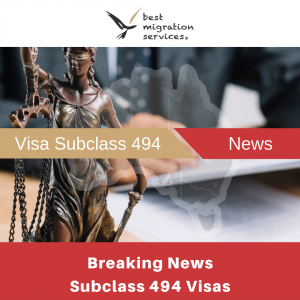 Subclass 494 Skilled Employer Sponsored: Substituting the current 187 (RSMS) visa and commencing November 16, 2019 the 494 visa has 9,000 places allocated per year. It requires employer sponsorship and the position must be likely to exist for 5 years. It has a 45 year age limit, competent English, RCB advice and must meet the AMSR. Visa applicants must have a suitable skills assessment and at least 3 years’ skilled employment.
Subclass 494 Skilled Employer Sponsored: Substituting the current 187 (RSMS) visa and commencing November 16, 2019 the 494 visa has 9,000 places allocated per year. It requires employer sponsorship and the position must be likely to exist for 5 years. It has a 45 year age limit, competent English, RCB advice and must meet the AMSR. Visa applicants must have a suitable skills assessment and at least 3 years’ skilled employment.
The visa validity period is 5 years. Conditions will be imposed which will enforce the government’s intentions that visa holders live, work and study only in regional areas (condition 8579) and if employer sponsored, only in the nominated position. Visa holders can move between regional areas. Regional areas are defined as any area excluding Sydney, Melbourne, Brisbane, the Gold Coast and Perth.
Holders of the new provisional visas will also be unable to apply for most other skills based visas in Australia unless they have completed at least three years in a designated regional area, unless exceptional circumstances exist. Additionally, similar to current arrangements for the subclass 457 and 482 visa program, holders of the new provisional visas can be negatively impacted by sponsor non-compliance.
The new permanent visa will be:
- Subclass 191 Permanent Residence (Skilled Regional): To meet the requirements of the permanent visa (from November 2022) applicants must have held a subclass 491 or 494 visa for at least 3 years, have complied with the conditions on that visa and have met minimum taxable income requirements.
Effect on current regional visas:
The Regional Sponsored Migration Scheme Visa (subclass 187) and the Skilled Regional (Provisional) Visa (subclass 489) will close to new applicants from November 16, 2019. Transitional arrangements will be put in place for applications which have been lodged and are undecided at that time, as well as applicants whose pathway currently targets the permanent Skilled Regional Visa (subclass 887).
Skilled Migration Changes:
The skilled migration points test will change from November 16, 2019. The changes will affect subclass 491 applicants as well as applications for other skilled migration visas that have not been assessed at that time (but only in a way that is beneficial for applicants, by providing additional points). The new points details are:
– 15 points for nomination by a State or Territory government agency or sponsorship by a family member residing in regional Australia, to live and work in regional Australia;
– 10 points for a skilled spouse or de facto partner;
– 10 points for certain Science, Technology, Engineering and Mathematics (STEM) qualifications;
– 5 points for a spouse or de facto partner with ‘competent English’;
– 10 points for applicants without a spouse or de facto partner.
Additionally, the raking order for invitations will change. The new ranking order will be as follows:
– First – primary applicants with a skilled spouse or de facto partner;
– Equal First – primary applicants without a spouse or de facto partner;
– Second – Primary applicants with a spouse or de facto partner who can demonstrate competent English, but does not have the skills for skilled partner points (age and skills);
– Third – Primary applicants with a partner who is ineligible for either competent English or Skilled partner points. These applicants will be ranked below all other cohorts, if all other points claims are equal.
SAF Charges (Subclass 494 Visa)
Subclass 494 – Skilled Employer Sponsored Regional (Provisional) visa
The following table summarises the amount of the charge that apply:
| Years elapsed | Turnover less than AUD 10 million | In any other case |
| <1 | AUD 3000 | AUD 5000 |
| 1-less than 2 | AUD 2400 | AUD 4000 |
| 2-less than 3 | AUD 1800 | AUD 3000 |
| 3-less than 4 | AUD 1200 | AUD 2000 |
| 4-less than 5 | AUD 600 | AUD 1000 |
SOURCE
[insert page=’footer’ display=’content’] Subclass 491 Skilled Work Regional (Provisional) visa: Replacing the current 489 visa and commencing November 16, 2019 the subclass 491 visa has 14,000 places allocated per year. This is a skilled migration (points tested) visa which requires either state government nomination, or sponsorship by an eligible family member who is settled in a designated regional area. It has a 45 year age limit and requires a positive skills assessment.
Subclass 491 Skilled Work Regional (Provisional) visa: Replacing the current 489 visa and commencing November 16, 2019 the subclass 491 visa has 14,000 places allocated per year. This is a skilled migration (points tested) visa which requires either state government nomination, or sponsorship by an eligible family member who is settled in a designated regional area. It has a 45 year age limit and requires a positive skills assessment.
The visa validity period is 5 years. Conditions, namely 8579 will be imposed which will enforce the government’s intentions that visa holders live, work and study only in regional areas and if employer sponsored, only in the nominated position. Visa holders can move between regional areas. Regional areas are defined as any area excluding Sydney, Melbourne, Brisbane, the Gold Coast and Perth.
Holders of the new provisional visas will also be unable to apply for most other skills based visas in Australia unless they have completed at least three years in a designated regional area, unless exceptional circumstances exist. Additionally, similar to current arrangements for the subclass 457 and 482 visa program, holders of the new provisional visas can be negatively impacted by sponsor non-compliance.
The new permanent visa will be:
- Subclass 191 Permanent Residence (Skilled Regional): To meet the requirements of the permanent visa (from November 2022) applicants must have held a subclass 491 or 494 visa for at least 3 years, have complied with the conditions on that visa and have met minimum taxable income requirements.
Effect on current regional visas:
The Regional Sponsored Migration Scheme Visa (subclass 187) and the Skilled Regional (Provisional) Visa (subclass 489) will close to new applicants from November 16, 2019. Transitional arrangements will be put in place for applications which have been lodged and are undecided at that time, as well as applicants whose pathway currently targets the permanent Skilled Regional Visa (subclass 887).
Skilled Migration Changes:
The skilled migration points test will change from November 16, 2019. The changes will affect subclass 491 applicants as well as applications for other skilled migration visas that have not been assessed at that time (but only in a way that is beneficial for applicants, by providing additional points). The new points details are:
– 15 points for nomination by a State or Territory government agency or sponsorship by a family member residing in regional Australia, to live and work in regional Australia;
– 10 points for a skilled spouse or de facto partner;
– 10 points for certain Science, Technology, Engineering and Mathematics (STEM) qualifications;
– 5 points for a spouse or de facto partner with ‘competent English’;
– 10 points for applicants without a spouse or de facto partner.
SOURCE
[insert page=’footer’ display=’content’] Subclass 191 Permanent Residence (Skilled Regional): To meet the requirements of the permanent visa (from November 2022) applicants must:
Subclass 191 Permanent Residence (Skilled Regional): To meet the requirements of the permanent visa (from November 2022) applicants must:
- hold a regional provisional visa subclass 491 or 494 visa when they apply for the Subclass 191 visa,
and have held that visa for at least three years; - have earned a minimum income for at least three years as the holder of a
regional provisional visa; and - have complied with the conditions of the regional provisional visa.
The visa validity period is 5 years. Conditions will be imposed which will enforce the government’s intentions that visa holders live, work and study only in regional areas (condition 8579) and if employer sponsored, only in the nominated position. Visa holders can move between regional areas. Regional areas are defined as any area excluding Sydney, Melbourne, Brisbane, the Gold Coast and Perth.
Holders of the new provisional visas will also be unable to apply for most other skills based visas in Australia unless they have completed at least three years in a designated regional area, unless exceptional circumstances exist. Additionally, similar to current arrangements for the subclass 457 and 482 visa program, holders of the new provisional visas can be negatively impacted by sponsor non-compliance.
The new permanent visa will be:
- Subclass 191 Permanent Residence (Skilled Regional): To meet the requirements of the permanent visa (from November 2022) applicants must have held a subclass 491 or 494 visa for at least 3 years, have complied with the conditions on that visa and have met minimum taxable income requirements.
Effect on current regional visas:
The Regional Sponsored Migration Scheme Visa (subclass 187) and the Skilled Regional (Provisional) Visa (subclass 489) will close to new applicants from November 16, 2019. Transitional arrangements will be put in place for applications which have been lodged and are undecided at that time, as well as applicants whose pathway currently targets the permanent Skilled Regional Visa (subclass 887).
Skilled Migration Changes:
The skilled migration points test will change from November 16, 2019. The changes will affect subclass 491 applicants as well as applications for other skilled migration visas that have not been assessed at that time (but only in a way that is beneficial for applicants, by providing additional points). The new points details are:
– 15 points for nomination by a State or Territory government agency or sponsorship by a family member residing in regional Australia, to live and work in regional Australia;
– 10 points for a skilled spouse or de facto partner;
– 10 points for certain Science, Technology, Engineering and Mathematics (STEM) qualifications;
– 5 points for a spouse or de facto partner with ‘competent English’;
– 10 points for applicants without a spouse or de facto partner.
Additionally, the raking order for invitations will change. The new ranking order will be as follows:
– First – primary applicants with a skilled spouse or de facto partner;
– Equal First – primary applicants without a spouse or de facto partner;
– Second – Primary applicants with a spouse or de facto partner who can demonstrate competent English, but does not have the skills for skilled partner points (age and skills);
– Third – Primary applicants with a partner who is ineligible for either competent English or Skilled partner points. These applicants will be ranked below all other cohorts, if all other points claims are equal.
SOURCE
[insert page=’footer’ display=’content’]According to the Migration Amendment (New Skilled Regional Visas) Regulations 2019, three new visas have been introduced to ‘assist regional Australia.’
The explanatory statement issued by the Minister for Immigration, Citizenship and Multicultural Affairs states, “The amendments introduce a revised points system for the subclass 491 visa as well as existing General Skilled Migration visas. Points are awarded for attributes that are linked with the applicant’s ability to make the greatest economic contribution, as the key purpose of the skilled migration program is to maximise the economic benefits of migration to Australia.”
The changes to the points test are to introduce:
· more points for having a skilled spouse or de facto partner (10 points);
· more points for applicants nominated by a State or Territory government or sponsored by a family member residing in regional Australia (15 points);
· more points for having certain STEM qualifications (10 points);
· points for applicants who do not have a spouse or de facto partner (10 points); and
· points for applicants with a spouse or de facto partner who has competent English (5 points).
Migration expert Chaman Preet explains the changes benefits both singles and those who have a skilled spouse.
“New system offers ten extra points for applicants who do not have a spouse or partner. Earlier applicants with partners had the edge over singles as they could claim extra points on their partner’s skills,” says Ms Chaman Preet of Melbourne-based Migration and Education Expert.
The amendments to the point system follow the recommendation of the Productivity Commission. In its 2016 report, the Productivity Commission had recommended that the points system be amended so that secondary applicants with skills and other desirable employment-related characteristics contribute significantly to the points score of the primary applicant.
“The Commission noted that around 50 per cent of Australia’s permanent skill intake is secondary applicants, many of whom have limited skills. Given the significant share of secondary applicants in the permanent skill stream immigration, the Productivity Commission stated that it is important to assess their contribution to the Australian economy and the community more generally as failing to give appropriate weight to the skill (and other) attributes of a spouse or de facto partner can shift the composition of immigration away from those that are most likely to benefit Australia,” the explanatory statement reads.
Experts believe the new system will benefit the more skilled applicants with better English language skills.
“Preference will be given to the applicants who have a skilled partner or those who do not have a partner. The applicants with a partner who does not have skills to or English competency to claim points will be ranked below all others,” says Ms Chaman Preet.
The new system will commence on 16 November 2019.
SOURCE
[insert page=’footer’ display=’content’]The instrument operates to specify a class of persons who are “fast track applicants”.
The specification will become relevant if a person in that class of persons makes an application for a protection visa, as they will be subject to the processing of their protection visa and any available review rights as a fast track applicant.
A “protection visa” is defined to mean the visa classes provided for in section 35A of the Act, which includes all permanent protection visas and temporary protection visas, including safe haven enterprise visas.
SOURCE
[insert page=’footer’ display=’content’]- The cap is being cut from 190,000 to 160,000 for the next four years.
- Scott Morrison said the move is designed to ease congestion in Australia’s busiest cities.
- Australian National University demographer Liz Allen said “Immigration is scapegoated as Australia’s problem when immigration is Australia’s solution.”
Australia has cut its annual immigration cap by nearly 15% and made it harder for immigrants to move to busy cities like Sydney and Melbourne.
The annual immigration cap will be cut from 190,000 to 160,000 for the next four years.
Prime Minister Scott Morrison told reporters in Canberra that he is making the changes in a bid to ease congestion in major cities,
“We will reduce the cap on our migration program, build the infrastructure and deliver the services Australians need, and plan for a more evenly distributed population growth,” the Morrison government said in a media release on Wednesday. “These changes are about easing population pressures in our biggest cities, while ensuring regional communities are given a much needed boost.”
“Australia has thrived from a steady population growth and is the most successful immigration nation in the world and our plan will ensure our country continues to lead the way. But over the last two decades, the infrastructure and services have not kept pace, causing congestion on our roads and public transport particularly in Melbourne, Sydney and South East Queensland.”
Many Australian voters see the nation’s rising house prices and congestion as a direct result of population growth and the move from Morrison’s government comes ahead of the upcoming federal election in May.
Australian National University demographer Liz Allen told The Guardian that reducing the number of immigrants makes no sense and described it as “woeful”.
“What we’ve got is same old, disguised as something innovative and strategic for our future,” Allen said on Wednesday. “Immigration is scapegoated as Australia’s problem when immigration is Australia’s solution.”
“It won’t result in any substantive change, and more importantly it doesn’t address temporary migration, which is the largest component of bums on seats in our cities.”
There are also questions about whether the cap reduction is just an attempt to lock in declining immigration levels of the last few years of the Turnbull and Morrison governments.
According to figures from the Department of Home Affairs, in 2017/18 the number of total migrants plunged 46 per cent to 162,417. That’s just 2,417 more than the cap the government has just put in place for 2018/19 and well short of the government’s previous cap of 190,000.
Additional reporting by Alexander Liddington-Cox


